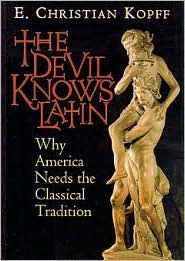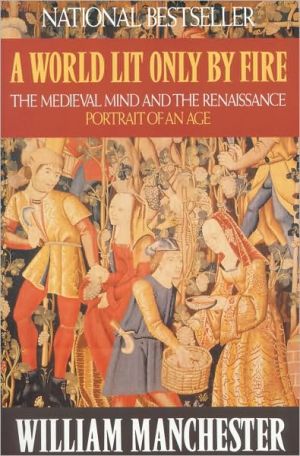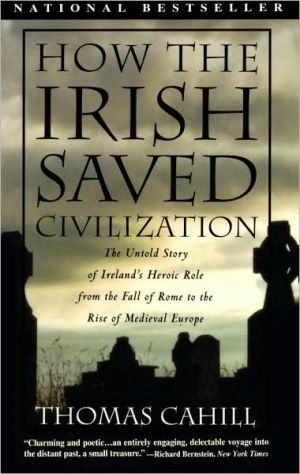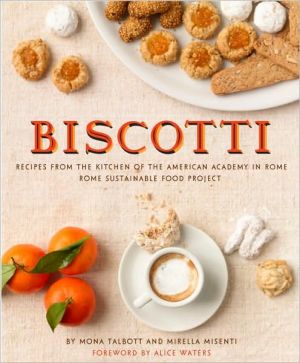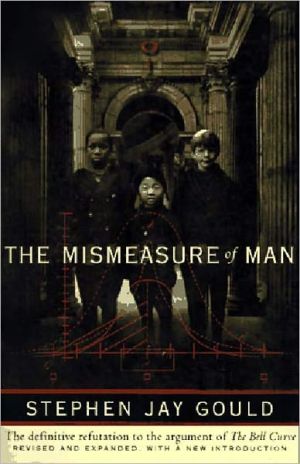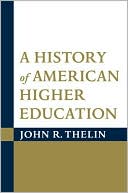The Devil Knows Latin: Why America Needs the Classical Tradition
For generations scholars treated the United States as a unique country whose cultural history could be studied in isolation from world events and traditions. More recently, writers have shown an increased awareness that American society, far from developing in a protected, ahistorical realm, can be understood only as part of a wider civilization. Now E. Christian Kopff offers an even sharper perspective by viewing America squarely within the classical traditions of ancient Greece and Rome....
Search in google:
For generations scholars treated the United States as a unique country whose cultural history could be studied in isolation from world events and traditions. More recently, writers have shown an increased awareness that American society, far from developing in a protected, ahistorical realm, can be understood only as part of a wider civilization. Now E. Christian Kopff offers an even sharper perspective by viewing America squarely within the classical traditions of ancient Greece and Rome. For, as Kopff demonstrates convincingly, a truly informed, nuanced view of American culture must rest upon an appreciation of our debt to the classical past. Denver Rocky Mountain News Reading E. Christian Kopff's The Devil Knows Latin is like hearing a series of liberal arts lectures from a brilliant, entertaining and deliberately controversial professor.
\ \ \ \ \ Chapter One\ \ \ TRADITION AND THE LUNATICS\ \ \ In The Poet and the Lunatics, G. K. Chesterton's poet Gabriel Gale meets a brilliant scientist devoted to the cause of emancipation from tradition and social convention one evening at an informal gathering. Gale and the scientist are discussing with a few friends the scientist's philosophy when Gale realizes that the scientist is mad. The poet rushes everybody away from the house just before the scientist blows it sky-high. Gale later explains to his bewildered friends that his suspicions were alerted by seeing three goldfish gasping desperately in a pool of water on a table in the library. In accordance with his philosophy, the scientist had liberated them from their bowl.\ The struggle between Gabriel Gale and the mad scientist represents the most important contest of our age. According to Nietzsche, archetypical modern, "The man who diverges from tradition is a victim; the man who does not is a slave." Aristotle saw things differently. "To live according to your country's way of life is not slavery," he wrote in his great reflections on Politics; "It is salvation." The divide could not be wider, and therefore, the enmity could not be more serious between those who side with Nietzsche and those who agree with Aristotle.\ The intellectual leaders of our age stand with Nietzsche. Like Nietzsche, they feel that if they can only free themselves from the trammels of tradition in religion, science, art, and politics, true fulfillment will be theirs. For them tradition is merely memorizing what othershave accomplished. Fulfillment, in their eyes, comes to those who have rejected the past, the handed-down, the socially constructed, in order to enter into a reality that is individualistic, innovative, and free. There is nothing innovative and free, however, in flopping about on a table in a pool of water. Tradition is not a cage. It is the goldfish bowl that keeps us alive.\ Tradition is an everyday reality. Languages are traditions learned by each generation from the preceding one and then taught to the next, more or less successfully. Our religions, which preserve our contact with the transcendent, are Sacred Traditions. There are also secular traditions like science, history, and self-rule that provide the basis for European civilization and the American way of life.\ All of these traditions, sacred and secular, are ancient. Science, for instance, began in the sixth century B.C., on the coast of Asia Minor, in a successful mercantile emporium called Miletus. A man named Thales started talking about the world as a rational system, comprehensible to human minds, without including the gods in his explanations. For instance, he explained that earthquakes are due to giant waves in the ocean on which the earth rested, and not to the will of Poseidon, the Greek god of earthquakes and the sea. He even suggested that everything in the world started out as water.\ What happened next was unusual. Another Milesian, Anaximander, accepted Thales' rather unlikely presuppositions: that the world is rational and can be understood by humans, that you can make sense of it without bringing in the gods, that the multiplicity of the world can be reduced to a single element. But he rejected the notion that the many different things of this world all come from one of the elements we know. The basis of our world must be different from any one element, though capable of producing them all. So Anaximander hypothesized that the known elements of our world developed out of an unknown element, which he called the Boundless or Infinite. He accepted some of Thales' basic presuppositions, subjected those ideas to critical analysis, and then added his own contribution.\ Finally, he taught all this to someone else.\ This is how tradition works. The first step is handing down the deposit. Then comes the critical evaluation of what was learned. Both steps are necessary for a truly humane assimilation of the past. Then, but only then, some gifted spirit may achieve a creative response that continues and renews the tradition. And after that, we begin again: teaching, learning, absorbing, criticizing, creating.\ Anaximander's pupil, Anaximenes, responded to him as he had responded to Thales. Accepting as a given the rather unlikely notion of the world as a closed system, rational and comprehensible, he objected that Anaximander had provided no mechanism by which the Boundless could turn into the other elements. He went looking for such a mechanism and noticed that when you opened your mouth wide and exhaled, the air felt hot on your hand, but if you pursed your lips and blew, the air felt cold. He decided that the basic element was air and it changed into the others by condensation and rarefaction.\ Many things have changed since the sixth century B.C. We now look for a Grand Unified Theory, not a single element. Many generations have made contributions, so that modern science looks as little like Milesian philosophy as a grown man looks like the baby he once was. When, however, John Barrow began his book The World within the World (1988) with a list of "traditional unspoken assumptions on which modern science is based," the first two were: "1. The Universe is ordered. 2. The Universe is logical." These two presuppositions go back to the Milesians. His third assumption, "The Universe is mathematical," goes back to Pythagoras, who lived at the end of the sixth century, and was added to the scientific tradition by Plato in the fourth century.\ A similar story could be told about history, democracy, and even Christianity. Most people understand that in order to participate in science students need a long and rigorous education. Few people think this about religion and democracy, and I am puzzled by this as was Socrates. Even about science, there is an idea that it is a species of tag-team wrestling, where the participant needs to be in touch with only the previous generation to play. Creative people want to do science, not waste their time studying past mistakes. The fundamental presuppositions of science have not changed, however, since the sixth century B.C., so studying the history of science is not a waste of time. The long story of how brilliant minds have tried out different strategies all with the same end in mind, understanding the cosmos, is not irrelevant. It may, in fact, lead to some important new discoveries.\ Take Werner Heisenberg, who propounded the Uncertainty Principle in Quantum Physics. As a student in the early years of the twentieth century, he was fascinated by the discoveries and theories of recent physicists like Max Planck and Albert Einstein. How, Heisenberg wondered, could light be sometimes a ray and sometimes a particle? This observation did not seem to fit the theory of physical atomism, itself the descendent of an ancient theory, that formed the basis of eighteenth and nineteenth century science. Heisenberg's father, however, had insisted that his son receive a solid classical education. Inducted into the militia after the end of World War I, young Heisenberg passed his free time by reading Plato's Timaeus, a work on the structure of the physical world, written in very difficult Greek of the fourth century B.C. Heisenberg found that Plato rejected physical atomism and looked upon matter as a mathematical construct. For Heisenberg this insight was an epiphany. Once he stopped trying to make light fit into the confines of physical atomism and thought about it in the language of mathematics, Heisenberg began to understand the new physics. As Galileo, another great reader of Plato, had put it, "The book of Nature is written in the language of mathematics." Heisenberg was not a Platonist. Heisenberg's thinking became creative, however, when he stepped out of the confines of his own age and attached himself to the tradition of science, stretching out over the millennia from Athens to Munich—and which is still alive in our own universities today!\ I once heard a college administrator, who had been a lively and popular teacher in his salad days, tell a group of alumni that we teachers were not very good role models. Instead of preparing students for innovation, we spend our time indoctrinating them about the achievements of the past. This administrator was blind to what his success as a teacher and a scholar, now distant by many years, shows that he once knew. Creativity is possible only as the final stage in a long, rigorous absorption of the teachings and discoveries of the past. The last thing we need for the future of our country or of our young people is one more lunatic smashing goldfish bowls in order to free the goldfish.\ If these reflections sound like an appeal to a conservative revival, it is because I believe in the creativity of conservatism. Much of the conservative revival of our day is devoted to salvaging the Roosevelt regime by modifying some of its more irresponsible financial traits. This is the "temperate conservatism" condemned by T. S. Eliot, clinging to what exists in defiance of morality and common sense. The conservatism I favor is concerned with first principles. These first principles are not spun out of thin air but rather discovered in history. One of the chief guardians of classical studies in the United States, Basil Lanneau Gildersleeve—of whom we shall learn more in chapter nine—expressed it well near the beginning of his great commentary on the Greek lyric poet, Pindar: "Large historical views are not always entertained by the cleverest minds, ancient and modern, transatlantic and cisatlantic; and the annals of politics, of literature, of thought, have shown that out of the depths of crass conservatism and proverbial sluggishness come, not by any miracle, but by the process of accumulated force, some of the finest intelligences, some of the greatest powers, of political, literary, and especially of religious life."\ If this general line of thinking is valid, and I think that it is, then it is imperative for us to remember the history of our finest achievements and to retell the story to successive generations. Our society, our religion, and our science are historical growths. Human fulfillment, which cannot be realized without society, religion, and science, therefore requires nourishment from the past. Our very future, which is born of our past, demands it. Most people understand this instinctively. Authoritative sources today, however, promise us not the creative acquisition of the past, but simple innovation. We fish need to tell these lunatics that the goldfish bowl suits us just fine.
Introduction Section I. Civilization as Narrative I. Tradition and the Lunatics II. Learning to Tell Your Story III. The Latin Invasions of English IV. Back to the Future V. The Classics, the Founding, and American Creativity VI. Federalism and Christianity VII. The Enlightenment Project VIII. The Ghost Dance: Liberalism in Crisis IX. The Classics and the Traditional Liberal Arts Curriculum Section II. The Good, the Bad, and the Postmodern X. Postmodernism and the End of the Humanities XI. The Final Solution of the Philological Problem XII. Scholarship and Bricolage XIII. Margaret Fuller in Rome XIV. Passion and Pedantry XV. J. R. R. Tolkien: Inventing Lost Worlds Section III. Contemporary Chronicles: Role Models and Popular Culture XVI. Russell Kirk: Bohemian Tory XVII. Douglas Young: A Free-minded Scot XVIII. Still in Saigon in My Mind XIX. Paying and Praying on the Old Homestead XX. Arms and the Man: Clint Eastwood as Hero and Filmmaker XXI. Publishers and Sinners: Arousing Interest in the Century's Top 100 Novels XXII. Things You See Better in the Dark: The Fate of American Cinema Epilogue: Optatives and Imperatives for the Next Millennium Appendix: Doing it On Your Own Index
\ Denver Rocky Mountain NewsReading E. Christian Kopff's The Devil Knows Latin is like hearing a series of liberal arts lectures from a brilliant, entertaining and deliberately controversial professor.\ \ \ \ \ Nelly HeitmanThe Devil Knows Latin has appeal for anyone who is tired of seeing the direction in which the country has been heading. Though it seems a heavy subject to tackle, it is writeen in laymen's terms and is extremely interesting in its scope. . . Kopff has definitely given the public quite a challenge. -- ForeWord Magazine\ \
